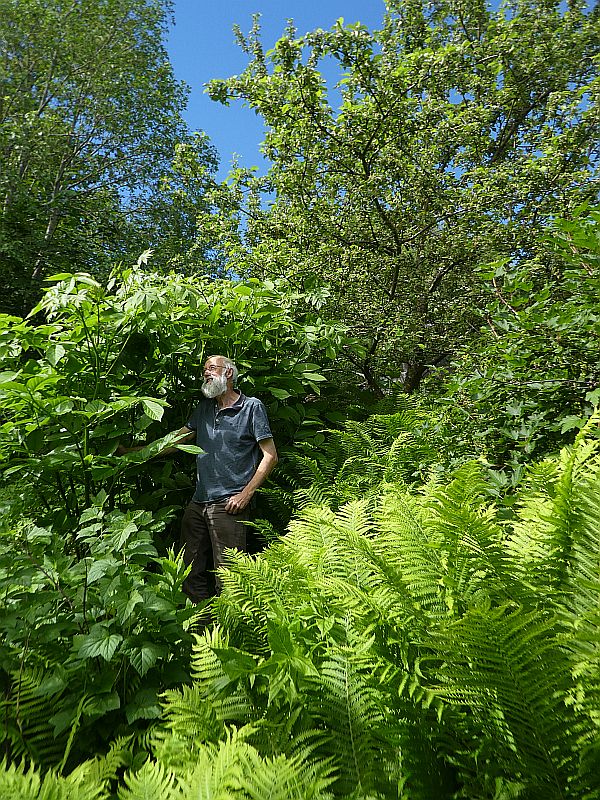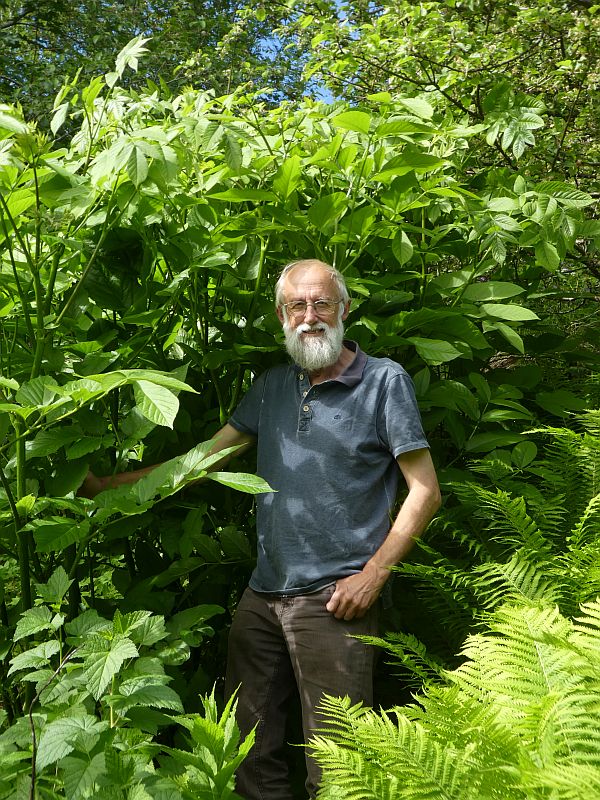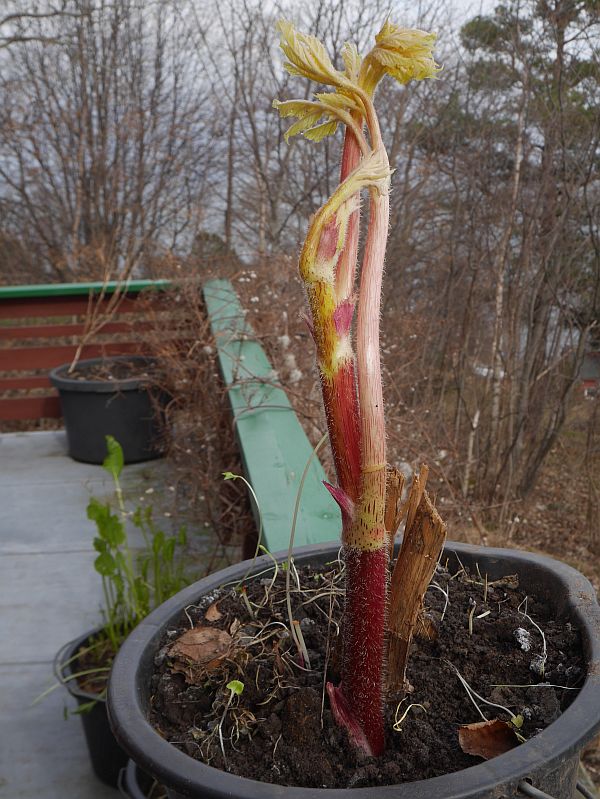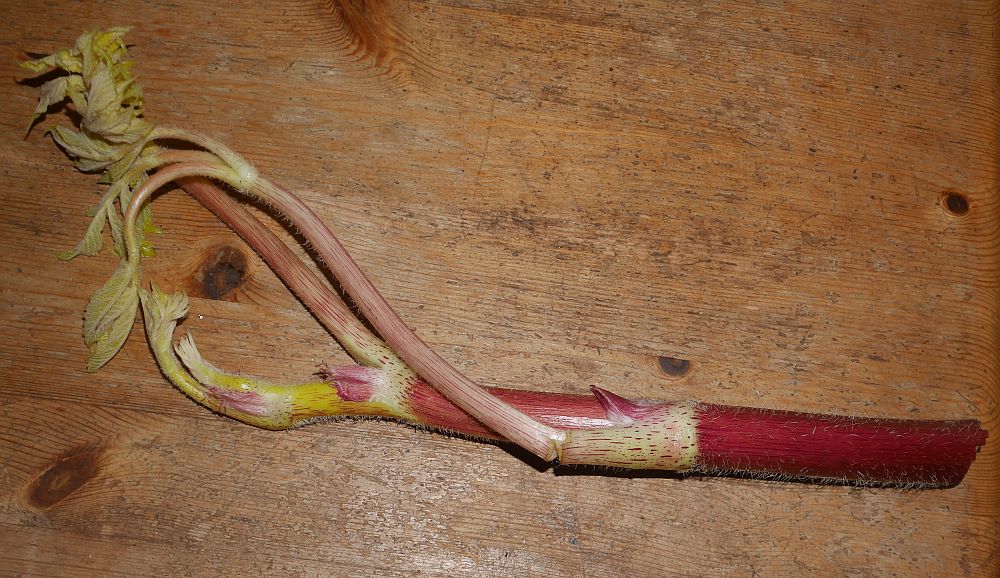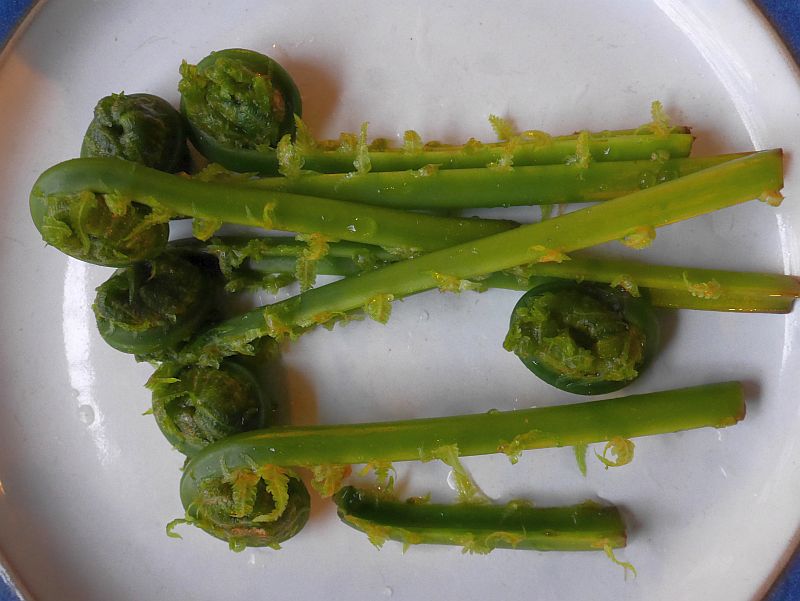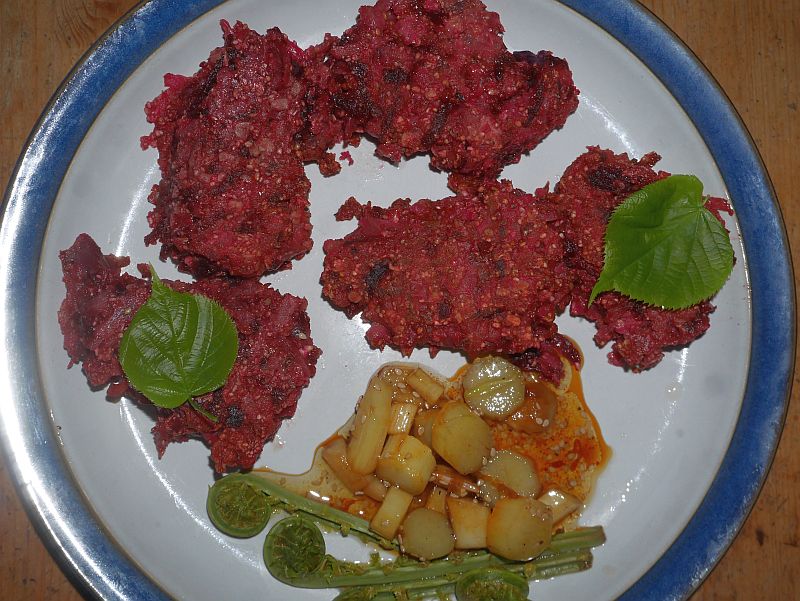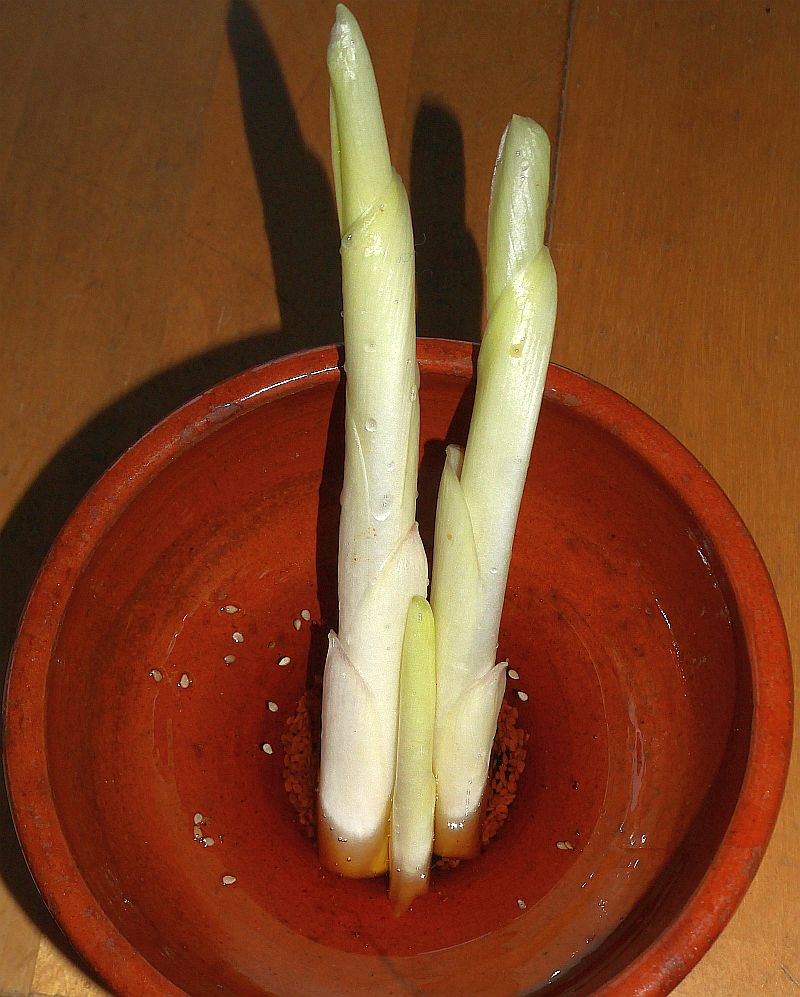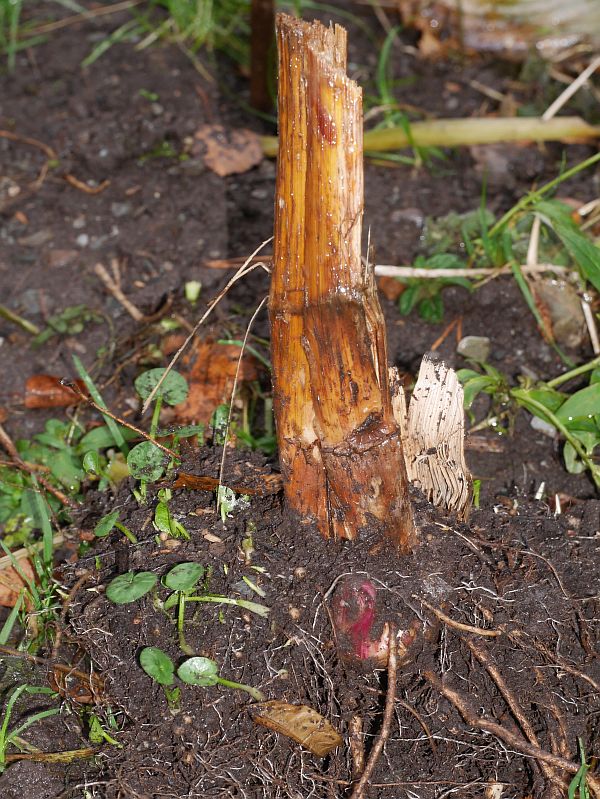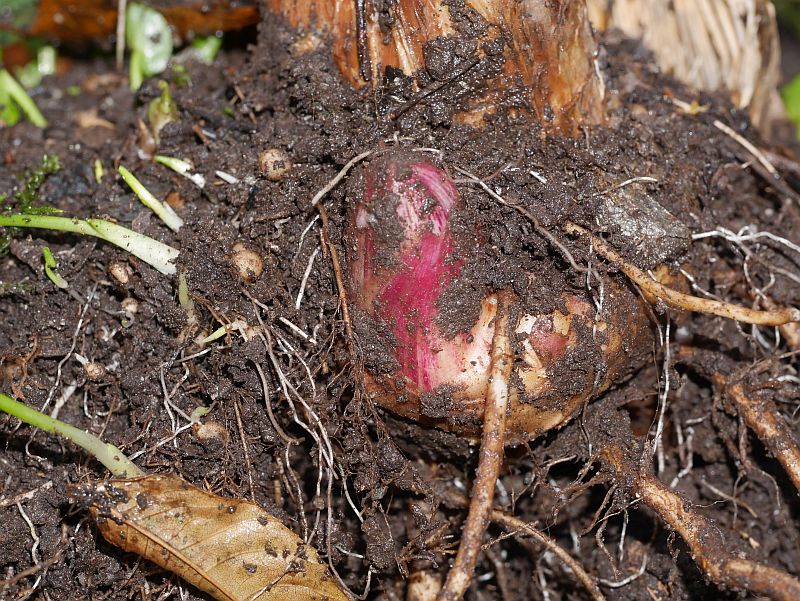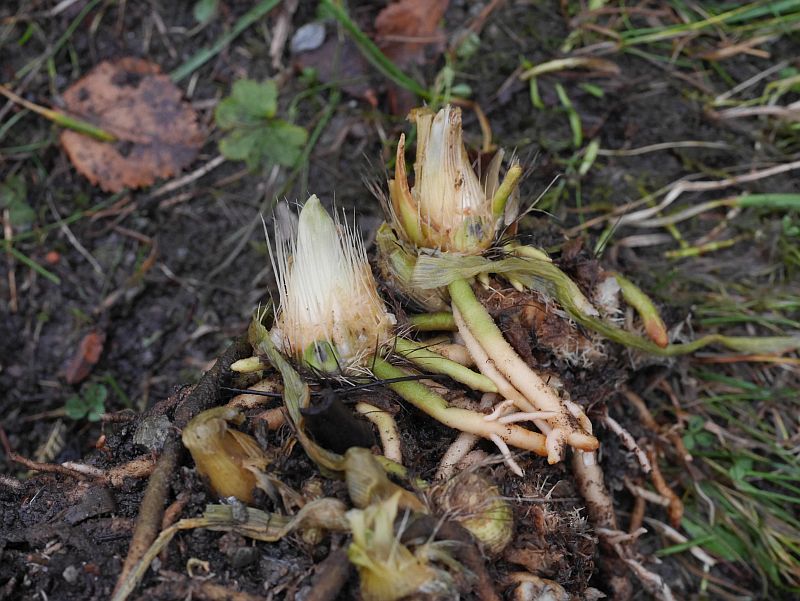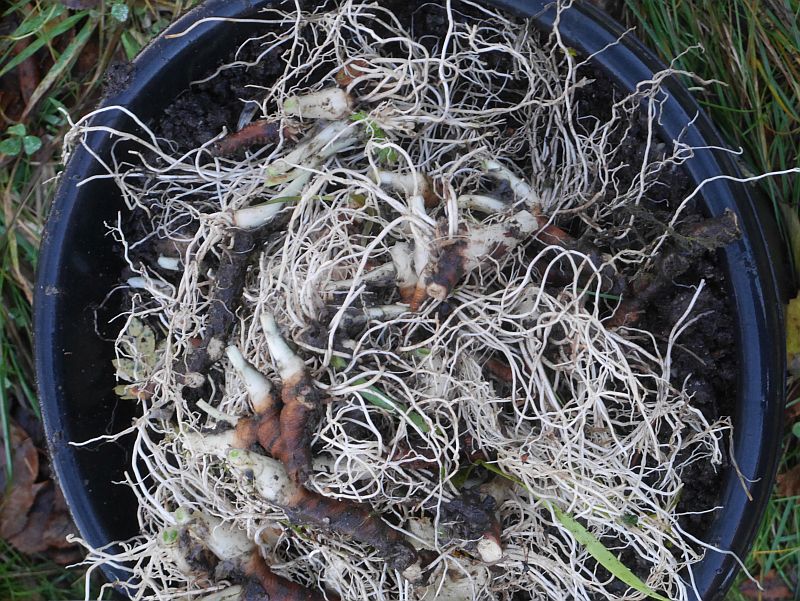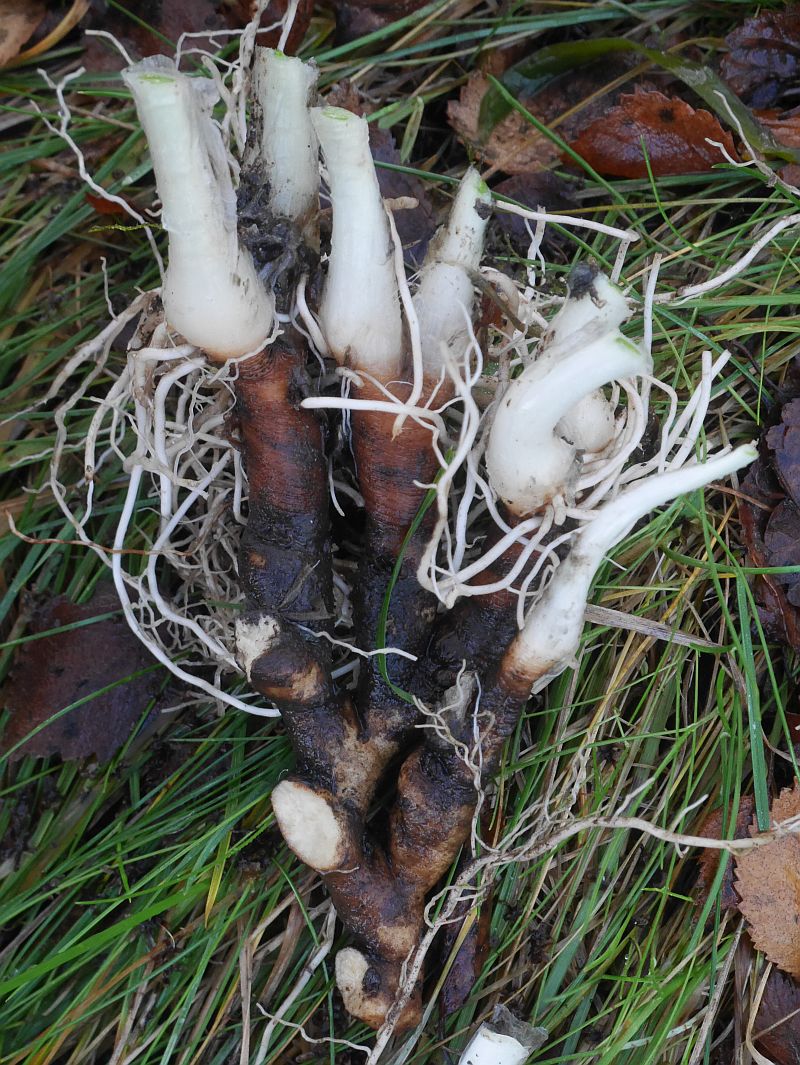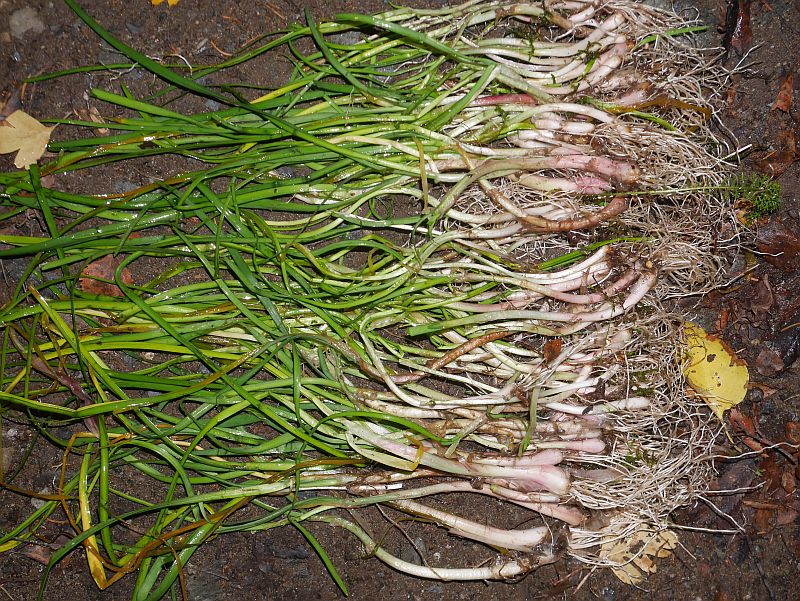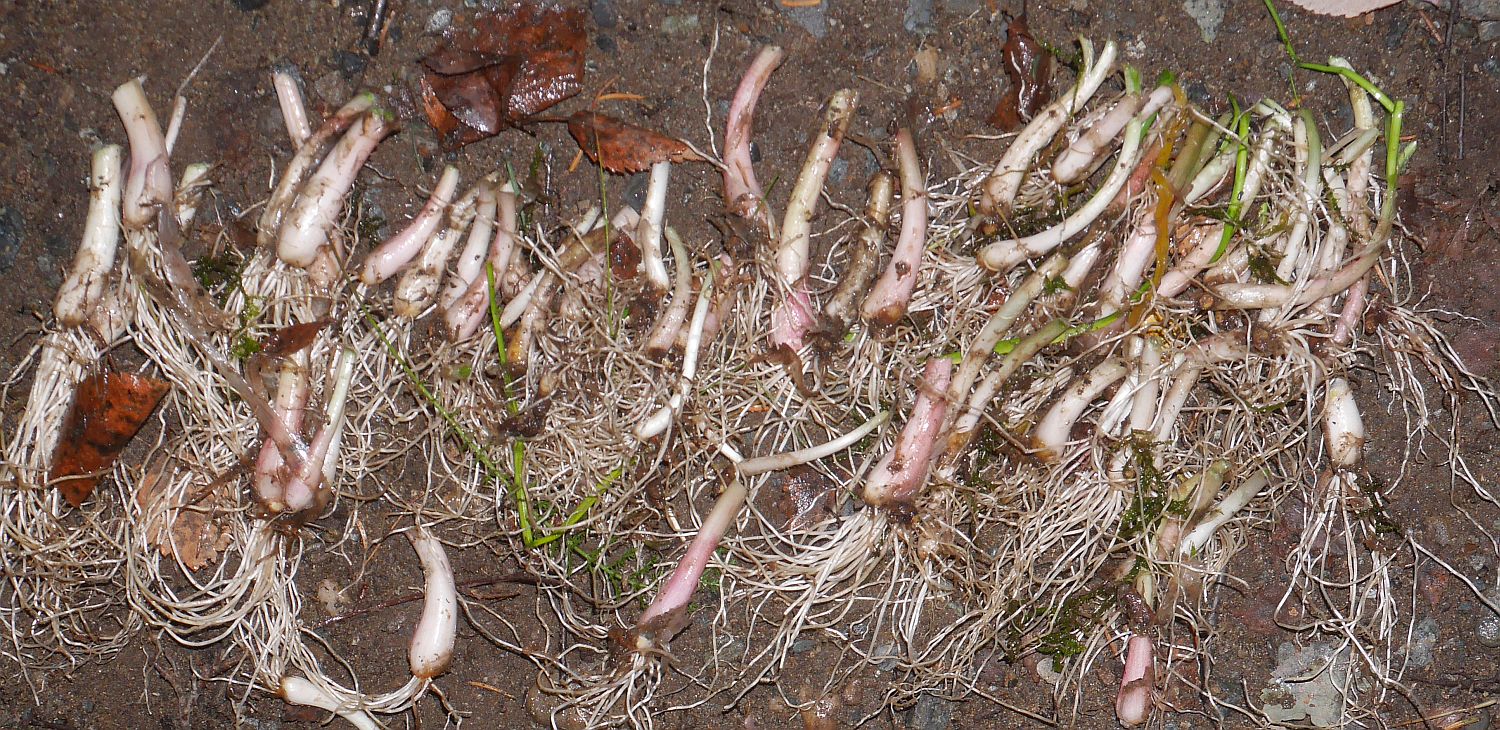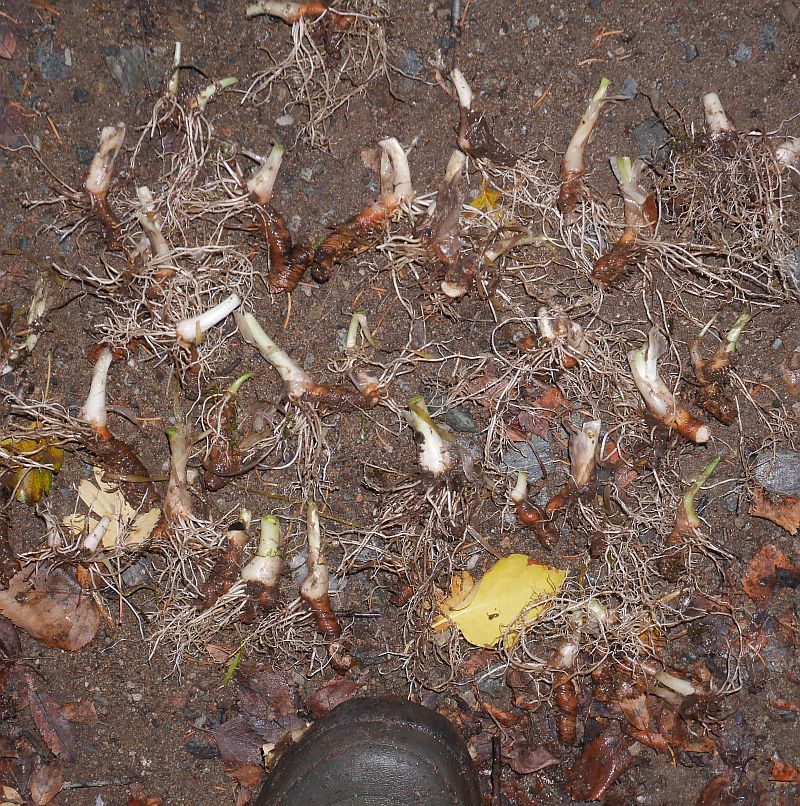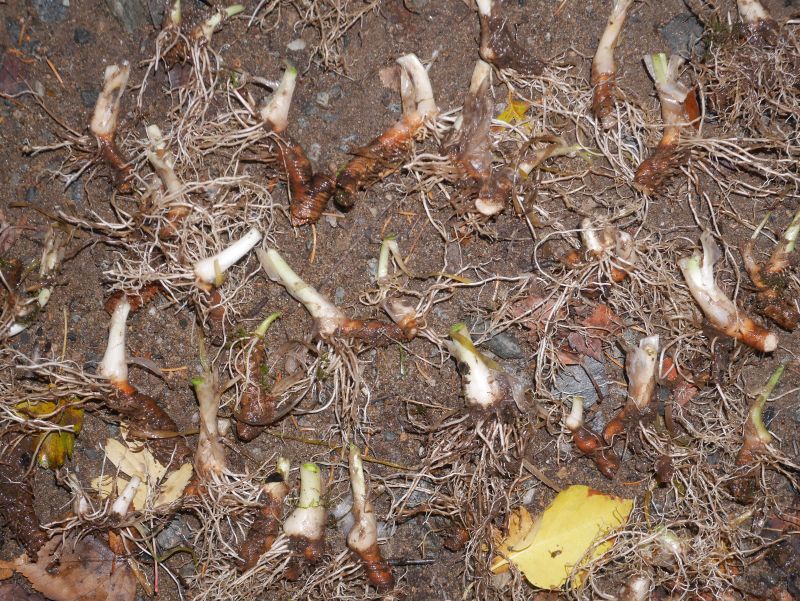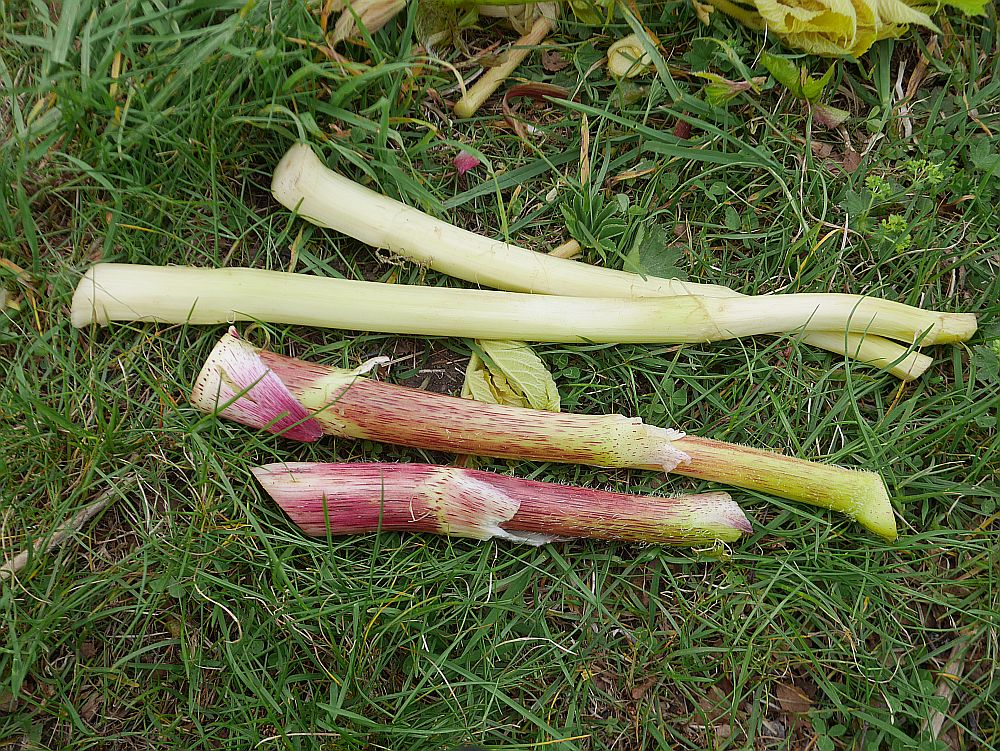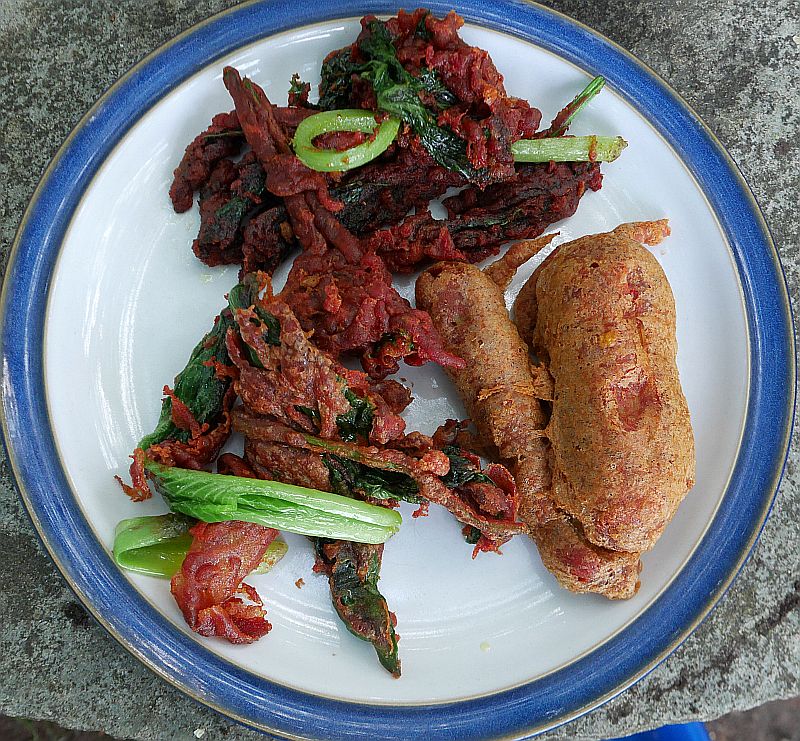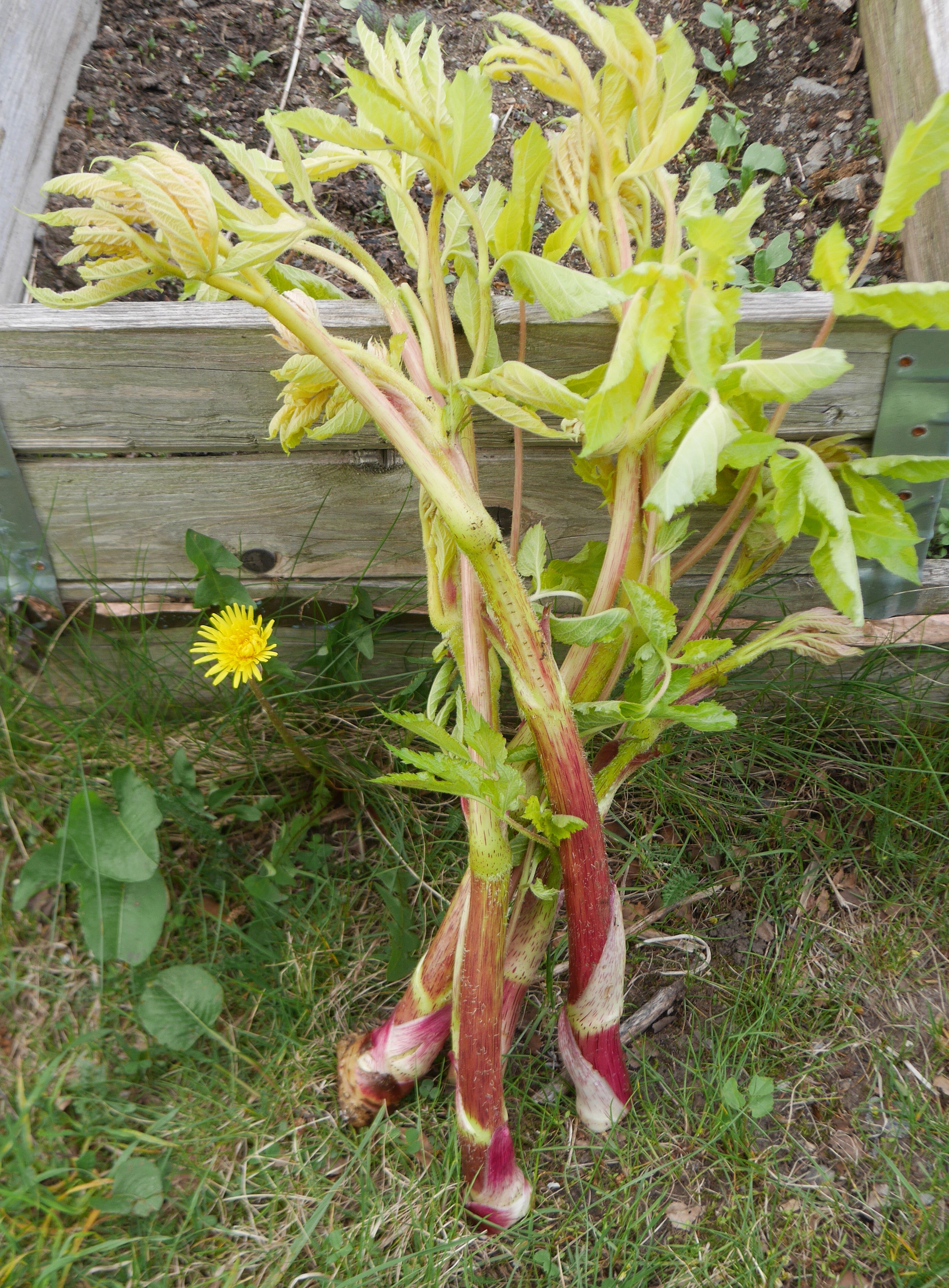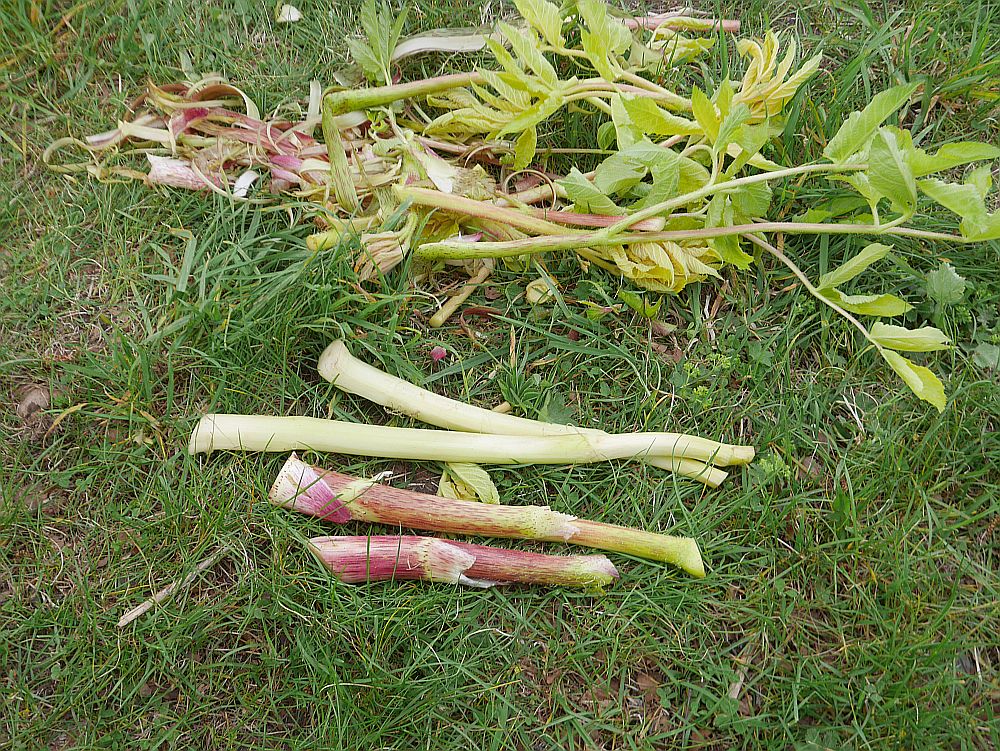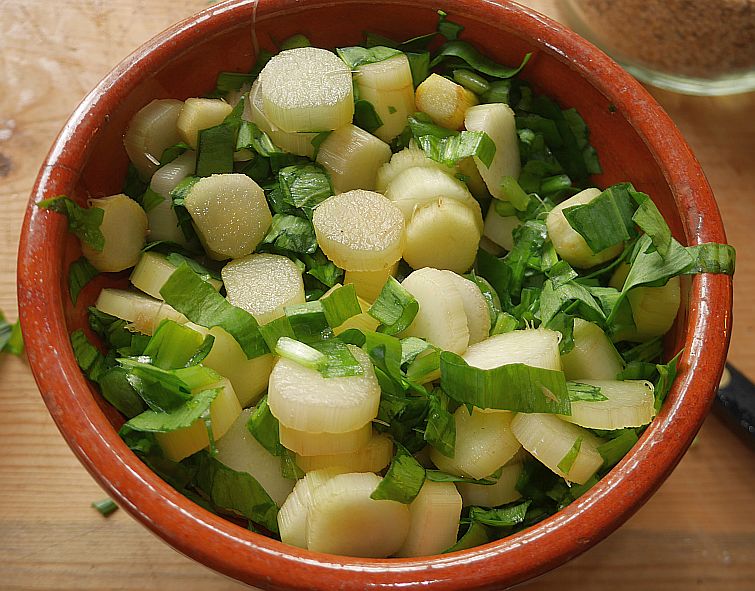During a webinar recently somebody asked me recently whether udo (Aralia cordata) resprouts in the same season if one cuts it. I said I would give photographic evidence that it does. The first picture is the blanched udo ready to eat. It was cut right down on 1st April. It reacted quickly by sending up two new shoots, one of which I ate and the second picture is what it looks like on 24th April (it was kept inside). So, the answer is yes that udo certainly responds quickly to us harvesting it.
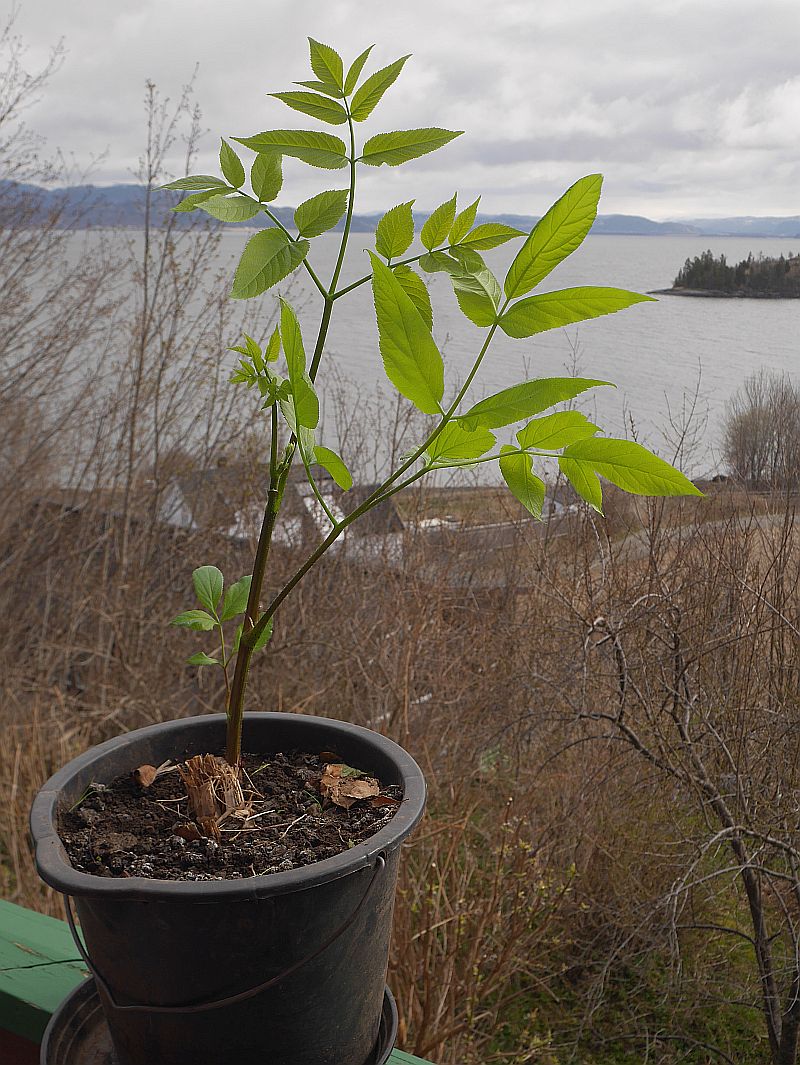
Tag Archives: Udo
Japanese Sansai in March
Almost exactly 5 years ago this week I was on a study tour to Japan to look at Sansai production. I’m doing a webinar talk about the trip for Norwegian Seed Savers (KVANN) on 18th April. Although it’s open for all it will be in Norwegian. If there is interest for it I could repeat in English at some stage, but probably not before next winter. If anyone would like to organise it, please let me know. Otherwise, I may just organise it as the first Edimentals talk! See https://www.facebook.com/events/1333421547030675
Sansai (meaning mountain vegetables, mostly perennials) are what are essentially previously wild foraged vegetables which are now produced on farms in the lowlands around the cities in Japan, often in greenhouses for all year production – roots are often frozen until they are needed).
With a little planning one can extend the season for some of the best sansai vegetables by digging up roots in the autumn and planting them in soil in buckets which are stored in my cold cellar (just above 0C this winter), and ready to be brought up into the living room for forcing in winter / spring (they could also be left outside, protected by piling leaves or similar around them – the roots are more exposed to cold in a bucket). For blanching I use a second upturned bucket on top. I’ve now harvested three important sansai veggies which were forced (it took a couple of weeks);
Udo (Aralia cordata): peeled and sliced and eaten as a salad in a sesame oil and soy sauce with roasted sesame seed dressing
Ostrich Fern (Matteuccia struthiopteris): steamed for 10 minutes
Urui (Hosta sieboldiana): The blanched shoots are deliciously crispy and mild tasting, perfect with a dipping sauce (sesame oil, roasted sesame seeds and soy sauce)
The sansai were served with fried veggie beetroot burgers (aka blood burgers) which are cooked and grated beetroot mixed with egg and wholegrain emmer flour (with grated onion, garlic, chili, salt and pepper).
Harvesting winter vegetables before the freeze
I’ve been self-sufficient in fresh vegetables year round and have blogged and lectured about how I can do this even in winter without a greenhouse, without a freezer and without using additional energy apart from my own manual labour :) The most important factor allowing me to do this is the cold cellar under the house where I can store vegetables cold and frost free. None of the common winter leafy green vegetables further south in Europe – kales (grønnkål), chards (mangold) and leek (purre) – can be reliably overwintered outside here, although winters are getting milder. For example, swiss chard is killed by the first hard frosts which due to our northern location last all day (little direct solar warming at this time of year). Usually I’m taken by surprise by hard frosts in early November and there’s a panic digging up vegetables and I often have to use an iron bar to get through the ice layer. Not so this year. Thanks to corona and a very mild first part of November, I’ve had more time for the harvest. Last week I lifted the swedes and turnips and yesterday the parsnips, jerusalem artichokes and carrots. Today, I moved all the swiss chards, celery and chicories (sikkori) to large buckets, planted in soil, ready to move quickly inside later in the week if necessary as colder weather is forecast. In the past I’ve stored these winter vegetables in hand made wooden crates filled with soil. However, after 20 or so winters, they’re no longer usable and I hadn’t got round to making new ones, so I will store in these large plastic buckets, which had been purchased to plant the Allium collection, now with a permanent home at the Ringve botanical garden.
I’ve also been digging up perennial vegetables for winter forcing. This includes various onions – Allium senescens, Allium flavescens, Allium angulosum and Allium cernuum. In addition, I’ve dug a udo (Aralia cordata) root and also a few ostrich ferns (Matteuccia struthiopteris) and Hosta “Frances Williams” (sieboldiana). Finally, I’ve been digging large amounts of my most important winter vegetable, dandelion! (see my 2018 harvest here: https://www.edimentals.com/blog/?p=20124)
19th November: the next morning it snowed (see the video at the bottom)!
Harvested swiss chards including the Lucullus type and perpetual spinach (all Beta vulgaris var cicla):
Chards with celeries at the beginning:
Udo record
My 18 year old udo (Aralia cordata) is probably the tallest ever this year (I’m 6 ft or 1.8m). After the coldest May for many years with plenty of rain, June is likely to be the warmest ever in this area with several days over 30C and a probable (to be confirmed) highest temperature for this area at 34.3C at the airport on Saturday. Cold damp spring temperatures are perfect for udo! I’m dreaming of fields of udo replacing the barley and oats!
Visit from SJH
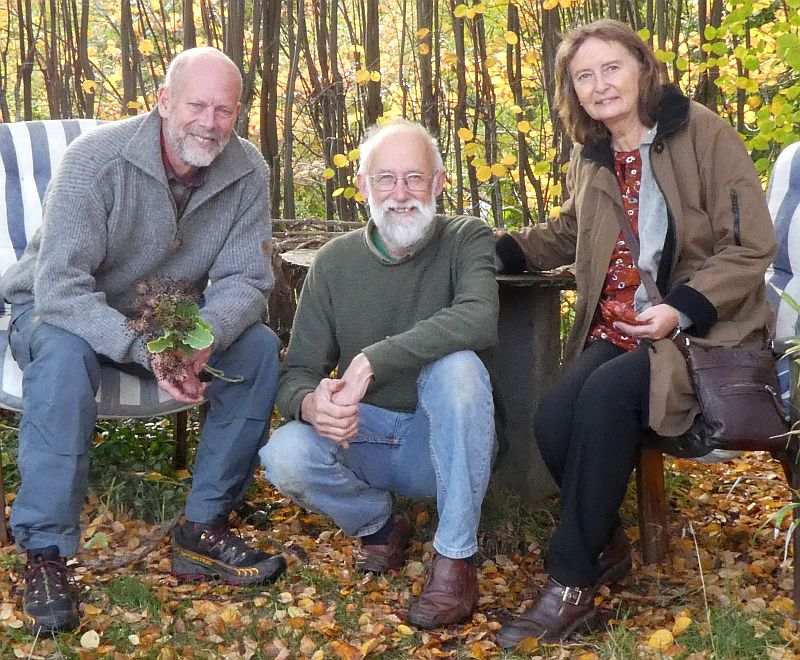
With Joe Hollis in Paradise!
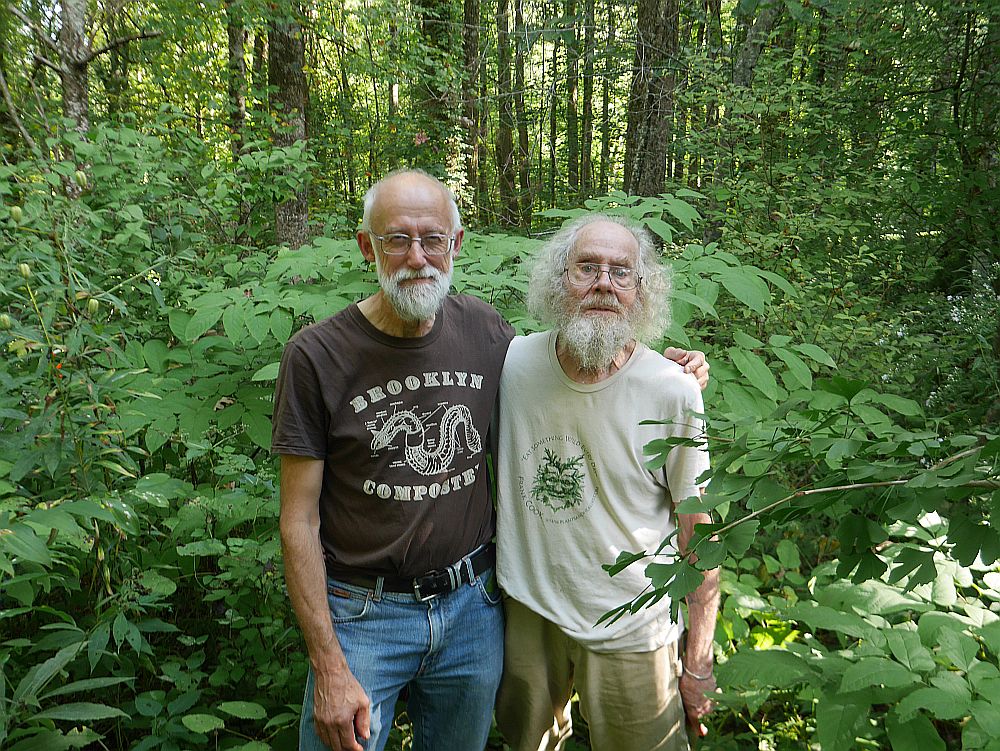
The garden gnome!

This year’s midsummer Udo picture!
My tallest vegetable is a herbaceous perennial!
Thanks to Maria Hammarsten from Jönköping University who visited today for the pictures!
